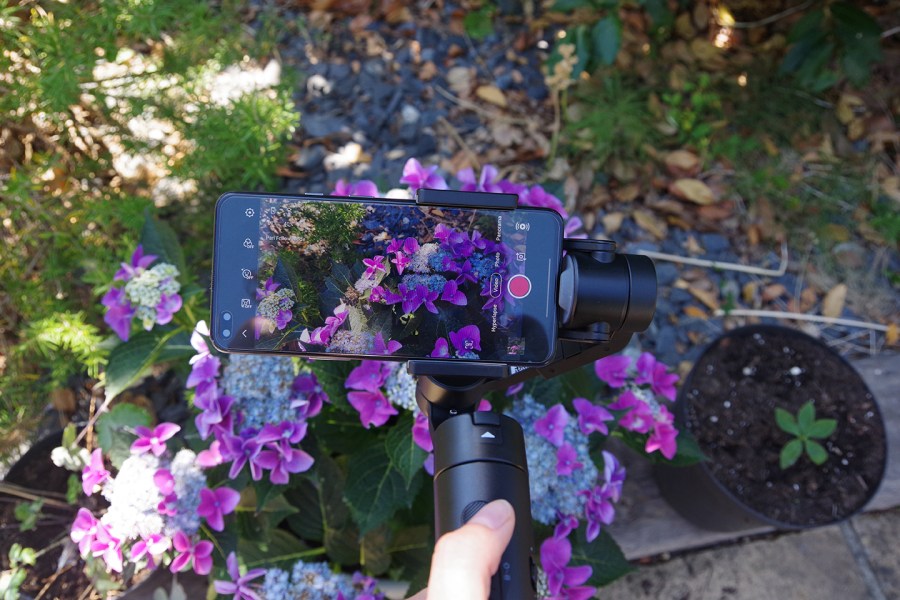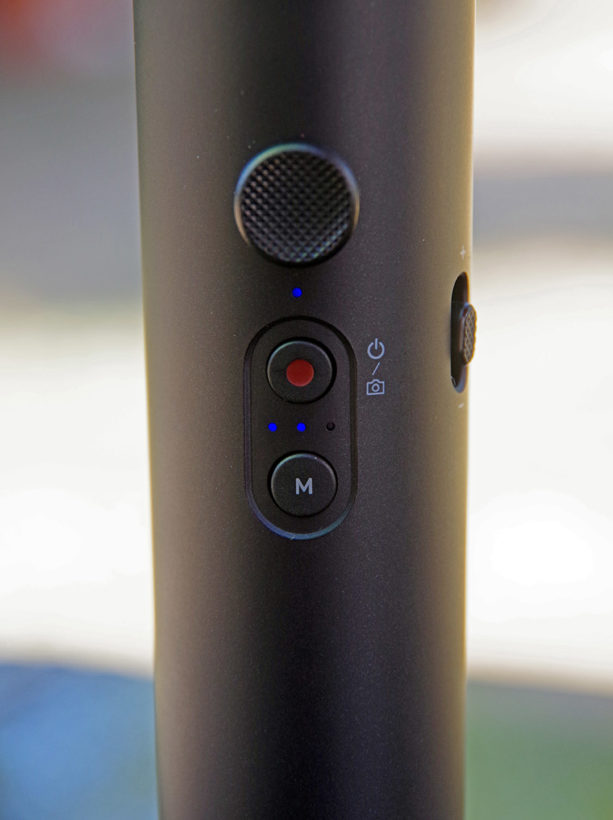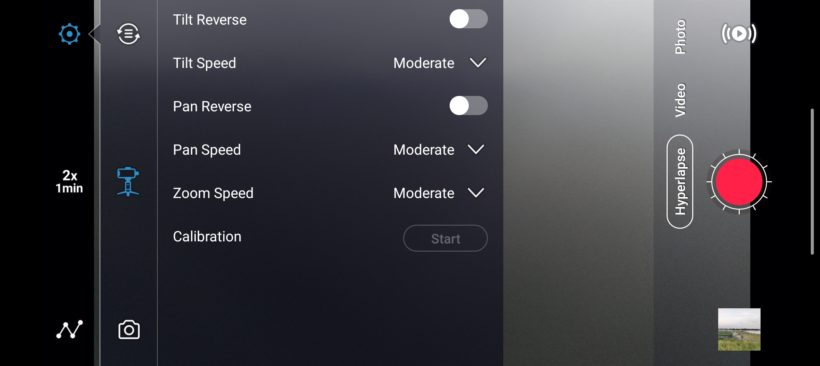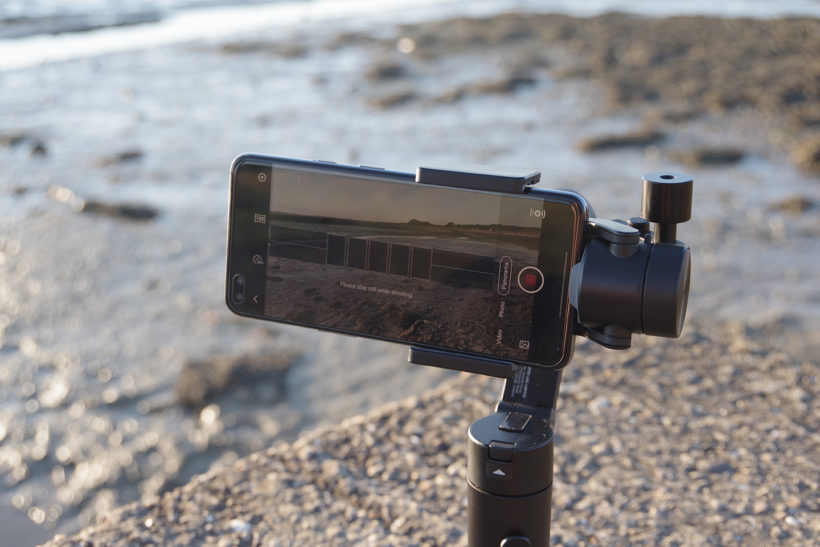ASUS ZenGimbal at a glance:
- Released in 2020
- Compact design
- Weighs 466g
- Vortex mode for 360 degree rotation
- Smooth shots
- Wide-angle shot mode (on phones with Ultra Wide Angle lenses)
- Tally Light
- Compatible phone size: Thickness: ≤ 12 mm, Width: 58 ~ 86 mm, Length: ≤ 180 mm
Released in 2020, the ASUS ZenGimbal is a three-axis stabiliser designed to create smooth and stable videos using a smartphone. It is compact, foldable and supports unique features when connected to its dedicated app.
With mobile content creation now popular amongst photographers, vloggers and videographers market, there is a demand. But, with demand comes competition, namely from the likes of DJI and their Osmo smartphone gimbal series, as well as the ZHIYUN Smooth Q4 Combo.
The ASUS ZenGimbal is available for £114.99 ($138.99, 136.42 EUR), and comes only in the black colour option.

What’s included in the box?
- Quick start guide
- Hard carry case
- Carry bag
- Wrist strap
- CounterWeight
- Tripod
- USB cable
The accompanying ASUS Shot app is available for Apple and Android and connects your phone to the gimbal via Bluetooth. App supports iOS 13 and above Android 10+
ASUS ZenGimbal Design
Although it hasn’t been ergonomically designed, the ASUS ZenGimbal is a solid piece of kit. It doesn’t feel cheap or flimsy. The arm is easy to unfold and fold up, with the help of diagrams in the Quick Start Guide. The gimbal handle is a solid cylinder and features a Joystick, Mode, Zoom and Capture button, which are positioned to be used by the thumb of the hand holding the gimbal.
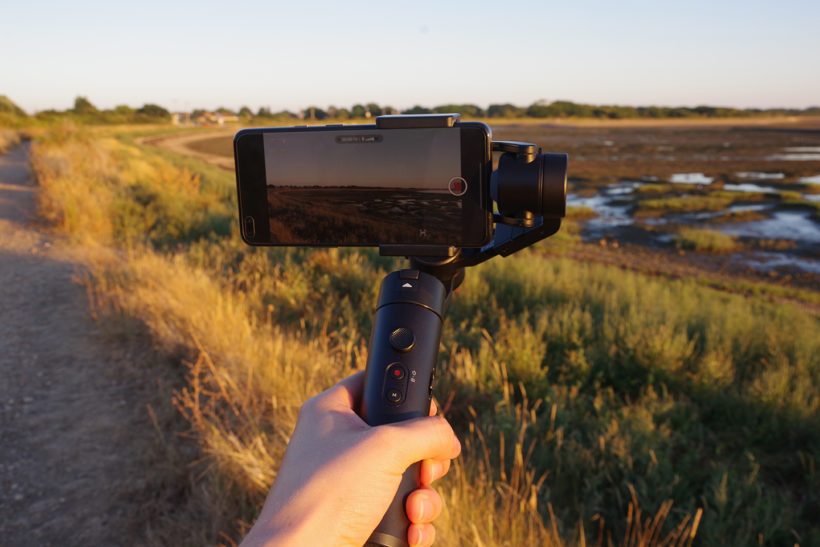
It is okay to hold but does feel quite heavy, as all of the weight is in the handle. It would be a more comfortable experience if the grip was designed to mold to the hand. The gimbal does lack an extending arm some other top competitors have, so you will be relying on your own arm length and strength for a good selfie shot.
The gimbal is compact and travels well with the option of using a pouch or the hard carry case which also fits the accessories. The device can also fit in your pocket. The gimbal dimensions when folded are 162 x 103 x 50mm, and unfolded 240 x 109 x 115mm.
The phone mounting system is a clamp attached to the gimbal itself. The clamp is secure and cushioned to comfortably fit and support your phone. The included counterweight works well to balance extra weight from the phone and screws into the arm of the gimbal.
Switching between using the gimbal and going handheld is quite clunky.
ASUS ZenGimbal Features
The gimbal has built-in three axis stabilisation technology, stabilising your smartphone whilst filming in motion. A number of control modes are available for the user. These include 360 degrees horizontal panning and an intelligent operational interface. The integrated buttons support intuitive operation.
Gimbal modes available:
Pan Follow – default mode. Pan left and right following the movement of the handle
Follow – Pan left and right, tilt up and down following the movement of the handle
Point of View (POV) – all parts of the gimbal follow the movement of the handle
Lock – Locks the gimbal arm in position
Vortex – unlimited 360 degree rotation
Selfie – Gimbal turns the back camera to face you. The gimbal will auto lock onto your face and you will also be able to see the Tally light on the arm of the gimbal in this mode.
Sport – entered through pressing and holding the joystick this mode allows you to follow and capture fast moving objects.
Wide-angle shot – Allows users to flip the phone 180° to use any wide-angle features on smartphones with an ultra wide-angle lens. When using this mode the shot is free and clear of hands or equipment.

Using the ASUS ZenGimbal
The ASUS Shot app is very nice and easy to use. When in the app, you have the option to shoot in Video or Photo, plus Panorama and Hyperlapse within the camera screen. With different settings available in each mode for the recording itself and the motion of the gimbal (pan, zoom and tilt speeds, and shake removal) to customise your shots. If your phone supports it, you can record video in 4K resolution.
I tested the gimbal whilst walking and moving on a bike. The gimbal creates steady shots in a variety of angles and transitions (such as low to high). A tally light on the gimbal shows you when you are recording on the arm of the gimbal – a helpful feature when using Selfie mode.
The app also has intelligent tracking modes for faces and objects. This works really well and is a great feature for recording the action and keeping the subject in focus as it moves.
Within the Panorama feature, you can change the dimensions on the shot (3×3, 3×5, 330, 180). Once selected the gimbal will create the panorama for you. Turning to each angle frame. The mini tripod accessory comes in handy here to keep the gimbal still and create a seamless photo. Likewise, if you want to create a timelapse, you have the option to attach the tripod and allow the gimbal to capture without any movement.
There are also options to livestream to Facebook and Youtube direct from the app.
Battery Life
Overall the gimbal has a good battery life, and lasts a long time if you are not continuously shooting, with 10 hours of operating time in ideal conditions. According to ASUS, the gimbal operates in temperatures from -10C to 45C. I have been testing the gimbal amidst the UK’s heatwave. After about 15-20 minutes in the late evening sun both my phone and the gimbal were very hot and the gimbal switched itself off. So it’s best to avoid direct heat.
Suitable for vertical shooting?
When there are gimbals that will support switching swiftly between horizontal and vertical orientation at the tap of a button, the functionality of this gimbal for a range of content and video types could be improved.
To shoot in vertical format you need to manually move your phone 90 degrees into vertical position. This itself isn’t a problem, but it also requires you to hold the gimbal awkwardly level at horizontal. If you move the gimbal into fully upright vertical position, it will reset the phone to horizontal. Most modes including low to high shots are available to use. But sport and follow modes are not.
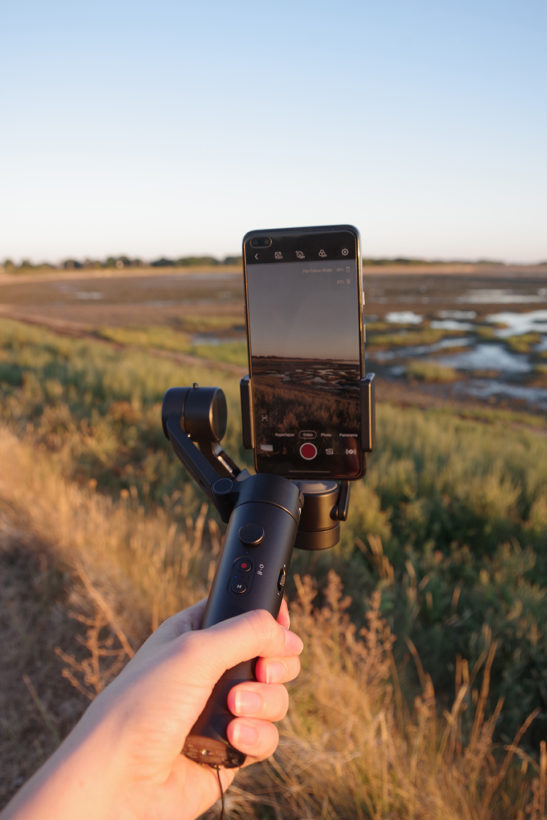
ASUS ZenGimbal vs DJI OM 5
In comparison to the DJI OM 5, I had a better experience with the ASUS gimbal – especially when it came to setting up my Android phone with the device. I have also found the app, its features and the tracking of people and objects much more efficient.
The DJI OM 5 does have an integrated function to switch between horizonal and vertical shooting, as well as a magnetic phone mount clamp which I feel the ASUS ZenGimbal is really lacking in.
Whilst they both fold up, and are compact enough for your pocket and travel, the DJI OM 5 is a lot lighter at 292g in comparison to ASUS’s 466g. Plus, for that weight and space, the DJI OM 5 importantly has been designed to curve and mould to the shape of a hand – and also contains an extendable arm.
Read my DJI OM 5 gimbal review here.

ASUS ZenGimbal Verdict
Although the ASUS ZenGimbal came with some big downsides for me: the weight, the shape of the handle and the lack of an integrated vertical shooting mode, overall I was pleased with my experience. For a budget gimbal option content creators, especially videographers and vloggers, this is a great option.

Sample videos:
Walking with the ASUS ZenGimbal

